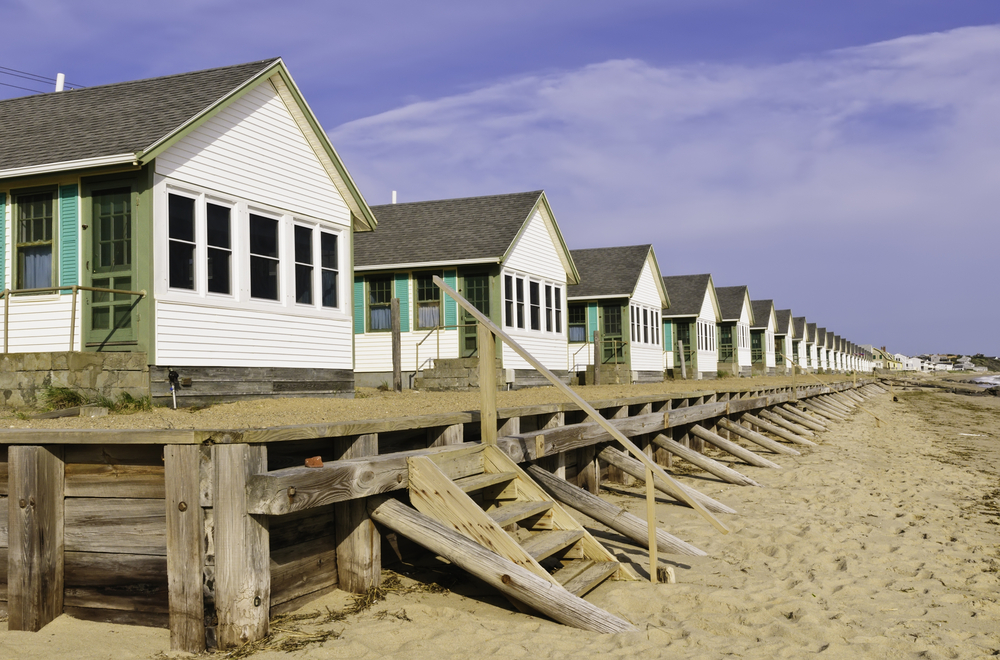9 min read

Why create a business plan for a rental property?
A business plan for a rental property is essential to:
- Enter into a rental investment strategically
- To secure financing or a rental property loan
Whether it’s a short-term investment or for long-term passive income, owning, leasing, and maintaining a rental property requires a lot of hard work. A business plan will guide your decision-making over any hurdles that may arise. Say, a minor sink leak when your tenant fails to scoop food remnants from the kitchen drain for months at a time and the P-trap needs emptying. Or, when a partner decides to jump ship and suddenly you’re on the hook for more than initially planned. (Preferably not, of course!)
And besides giving you the strategic peace of mind to enter a rental investment, if you’re planning on securing a rental loan, then it’s a critical part of the process to prepare for a potential lender. If you're not confident in drafting one yourself, working with a professional business plan writer can help ensure your plan is clear, detailed, and tailored to meet lender expectations.
What should a business plan for rental properties include?
Ultimately, your business plan for a rental property is a tool for the following:
- Mapping out your vision
- Identifying the keys to success and your objectives
- Market analysis
- Marketing
- Organizational structure and operations
- Providing a structured financial plan for lenders and/or other investors
To cover the content listed above every business plan for a rental property should include these sections:
- Executive Summary
- Company Description
- Business Model
- Market Analysis
- Marketing & Operations
- Financial Plan
Below we review the sections of the standard rental property business plan in more detail.
6 steps to create a business plan for a rental property
1). Executive Summary
The first section of your rental investment business plan should be the Executive Summary. This is a brief overview of all the elements of your plan. It introduces the team and your experience.. It should describe the property you plan on renting and your business objectives for it. And, in short form, the market analysis and strategy for finding tenants, operating and maintaining the home(s) and any need for financing.
When you’re writing the executive summary, using templates can help ensure clarity and consistency, especially if it’s the only part an outside party might read. It should give a concise overview of the full scope of your project in a half-page to one full page length.
2). Company Description
In the company description you will introduce yourself and any partners, the organizational structure of your company and your experience. Hopefully also demonstrate why any partners are not likely to jump ship as suggested earlier.
Describe how the company is managed and who carries what responsibility along with any foreseeable management gaps and how you plan to address those. By outsourcing a bookkeeper or administrative assistant for example.
Include the full names, roles and all relevant real estate experience and licenses. Think of it as a mini-resume for each member involved in the project.
Also include the company structure: are you an LLC, a sole proprietorship, a joint venture? It’s also wise to outline what types of coverage you maintain, for instance, business liability insurance to protect against potential tenant disputes or property-related claims.
3). Business Model
The business model section of a rental property business plan should outline how you plan to make money with this real estate investment. While the rental income is likely the primary source of income, you might also include other sources of revenue:
- Fees (application fees, late payment fees, etc.)
- Deposits
- Additional charges (cleaning, service, etc.)
Cap off this section with a brief overview of how this investment will be profitable. For example, if similar properties in the area are rented for $1,300 and your mortgage payment is $950, it demonstrates the investment is sound. You don’t need to go into too much detail as more will be covered in the market analysis and financial plan elements.
4). Market Analysis
While this section requires the most work, if you’ve reached the stage of drafting a business plan, you’ve hopefully already completed most of it. As the old adage states, it’s all about location, location, location. A rental property market analysis usually includes:
- The state of the surrounding housing market:
- Is it growing or shrinking?
- The type of housing in the area (apartments, single-family homes, townhouses etc.)
- Population and demographics
- Local amenities and businesses
- Distance to metropolitan areas or main commuter routes
- Unemployment and crime rates
- Foreclosure rates
- The competitive landscape:
- Vacancy rates
- List out any other rental companies you know of operating in the neighborhood
- Data for similar homes/rental properties in the area
- Identify some comparables, “comps,” based on square footage, bedrooms, design, quality and location, then list them out to further demonstrate the competitive market.
- Include the average monthly rent for comparable homes and others
The above should support your estimates for property value, rent prices and how easy it is to find tenants. For example, if there are some rental comps that rent their homes for $1,200 to $1,600, then you should have no problem listing your proverbial piece of the rental market pie for $1,300 which still yields an adequate profit margin to expect the property will be profitable.
5). Marketing & Operations
The marketing section should include your branding, communications strategies, marketing tools and plans for finding tenants.
Beyond your company name and logo, this section should explain what presence you wish to have in the community as a rental property business. What is your commitment to finding tenants and seeing to emergencies and repairs? (For example, minor floor damage from your budding “chef” tenant mentioned earlier). Also demonstrate what sets you apart from the competition.
Next, include the promotion strategy for the listing you plan to rent. Draft an example along with a list of which platforms you plan to post it on (Zillow, Craigslist, Apartmentfinder, Point2Homes, RentCafe etc.). Typically, using online listings is enough to find a tenant but if your rental property is in a neighborhood geared to an older demographic you might turn to other formats like your traditional flyers or newspaper classifieds.
Finally, this section is also where you would include any websites that you own and might list the property on.
6). Financial Plan
When you’re drafting a business plan for a rental property, the financial plan is the most detailed and reviewed aspect by investors, lenders and external parties. In other words, here’s where you want to pay attention. The financial plan has the following items:
- Current financials
- Initial costs
- Pro forma financials
- Break-even and projected P&L
- Balance sheet
- Cash flow
- Exit Strategy
Let’s review these in more detail:
Current Financials
Financials should include the current financial standing of the property along with any costs to be incurred before it can be rented. The value of the home and fixed costs such as insurance and HOA fees etc.
If you have rented out the home previously include vacancy/occupancy rates and the current gross rental income.
Initial Costs
Initial costs include any expenses required before you are able to fill the rental with tenants. These might be repair costs, renovations, permits or licenses.
Pro Forma Financials
Here’s the section where you will include detailed financial reporting of the property’s projected income and expenses. Gross rental income, net operating income, debt coverage would all be listed in your pro forma financials. This is where you would demonstrate that the rental income would cover the debt service if you were trying to secure a DSCR loan for example. You might also include a break-even analysis and a projected profit and loss.
Balance Sheet
Your balance sheet is summarized by the following formula: Assets - Liabilities = Equity.
The balance sheet for a rental typically depicts your equity over a calendar year. The assets would likely include: the value of the land and the building, any improvements you’ve made to the property (new roof, additions, HVAC, car ports, etc.). Non-property assets would also include physical assets you’re giving the tenant access to. For example, furnishings, decks, or sheds.
Next on the balance sheet list both long-term and short-term liabilities. Long-term includes outstanding rental mortgage loan payments, lines of credit or other debts associated with the property. Short-term liabilities include any payments due each year on the property. Taxes, insurance, HOA fees would all be considered short-term liabilities. If you haven’t received the bill, they are liabilities and should be included on your balance sheet.
Subtract your liabilities from your assets and you’ve got your rental property equity.
Cash Flow Analysis
Your cash flow analysis shows investors and lenders the liquidity of your rental property. This depicts your revenue less expenses over a certain period of time. You could consider the following formula, Gross Income - Expenses = Net Income, to measure the cash flow of the property.
List all sources of income and deduct all expenses. Expenses may include mortgage payments, taxes, insurance fees, management and operating costs, permits or other maintenance fees. You can consider using landlord software to help generate reports efficiently.
Finally, once you’ve worked through the steps to create your business plan for a rental property, you might conclude it with a summary of your exit strategy. If you plan to rent it long-term note that fact along with your backup plans should the home remain vacant for too long, or worse, that partner mentioned earlier bails on your investment.
There are many versions of a business plan for a rental property that might function as an internal document, but it will serve you well to include more detail about the keys to success for your project in order to secure the funding you might require.
Ready for a lender to review your rental property business plan? Get in touch to begin discussing your options.
Table of Content

Take your pick of loans
Experience a clear, stress-free loan process with personalized service and expert guidance.
Get a quote


